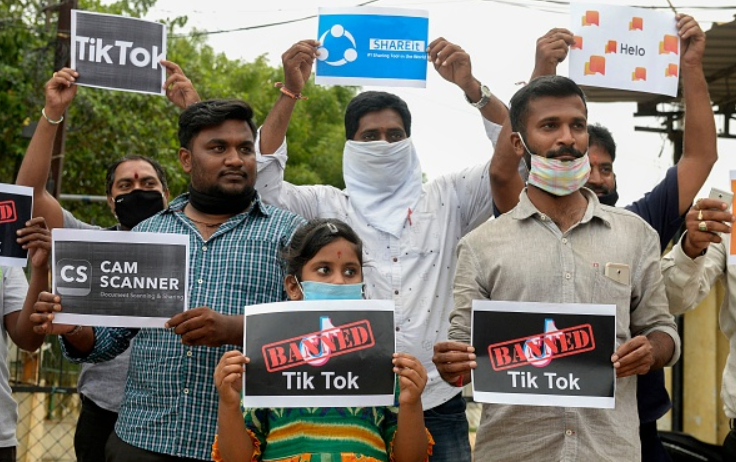
A recent report by a U.S.-based social analytics firm uncovered its first state-aligned operation to create deceptive political content using Artificial Intelligence (AI)-generated video footage. According to the report, a pro-Chinese influence operation disseminated AI-generated news anchors at Wolf News, a fictitious media outlet, discussing issues like gun violence in the United States and the importance of great power cooperation between China and the United States. While instances of deep fakes are not new, their sophistication, dissemination, and penetration in a target audience have made tremendous advancements in recent years.
These developments raise significant concerns for South Asia. As Beijing’s footprints in South Asian nations grow, increasing dependence on the Chinese technology ecosystem creates avenues for PRC influence and control. Through the invisible hand of the hardware-software duo, which now proliferates unchecked in many South Asian nations, civil societies can now transform into new frontiers of war.
Chinese Influence Operations in South Asia
Although the threat of information warfare is high, it remains little understood. In a separate 2021 report on China’s influence in South Asia, the authors underlined that the “tools and tactics of China’s activism and influence activities remain poorly understood among local experts and elites.” According to the report, the space for counter-narratives almost completely diminishes once Chinese investments, coupled with strategic messaging through influence operations, take hold. Further, in countries like Bangladesh and Nepal, Chinese investments in the tech sector complement messaging campaigns, helping the CCP create an image of a benevolent neighbor interested in creating employment opportunities and economic prosperity.
Through the invisible hand of the hardware-software duo, which now proliferates unchecked in many South Asian nations, civil societies can now transform into new frontiers of war.
The same year, a report by a Delhi-based think tank mapped Chinese footprints and influence operations in India, providing detailed coverage of China’s covert and overt influence operations. Chinese activities ranged from investments in the online education sector and tech startups to media and cinema. For example, Chinese conglomerates like Alibaba and Tencent became major investors in India’s education sector in recent years. Notably, these companies accelerated investments in South Asia following domestic scrutiny for misleading Chinese consumers through deceiving pricing and false advertising. As these stand-alone platforms can be autonomous and unaffected by the regulations of platforms like YouTube, strategic advertising can be employed. This pattern halted only after the Indian government banned several Chinese applications in 2020, considering them a national security threat.
In 2022, Freedom House measured Beijing’s global media influence, showing Chinese state media penetration in South Asia. The resulting report highlights that Chinese state media outlets operate accounts on social media in Urdu, Hindi, Bengali, and Tamil, all with vast followings. For Beijing, this can serve as an immensely beneficial source for shaping societal perspectives through strategic messaging. Further, unlike on platforms like Twitter, the report underlines that Chinese media channels in these languages are not labeled as Chinese state media, thus, erasing any distinction between state-directed and organically produced content.
While Beijing carries the most influence in Pakistan, Bangladesh, Sri Lanka, and Nepal are also on the long-term radar of the Chinese Communist Party. India stands as a primary rival in China’s aspirations of crafting a unipolar Asia. In this pursuit, China may seek to disturb longstanding societal affinities between India and its neighbors to gain an advantage. Exploiting existing fault lines in South Asian societies through information operations appears to be a strategy China will continue to actively deploy.
South Asian Fault Lines
South Asia remains one of the least connected regions in the world. While many tensions defining the subcontinent are historical or territorial, others are products of politics that leverage the citizenry’s sentiments through provocations and manipulations. This has led to a battle of influence between India and China in South Asia. Today, both seek to invest in human and infrastructural capacity building in South Asian nations and hope to benefit from their markets in various sectors.
To make the landscape conducive to its interests, China has employed tactics to shape the societal psyche in these nations in its favor. China has gained significant control over strategic messaging infused in South Asia through soft power mechanisms, altering the broader geopolitical picture. For example, the famous Chinese-owned social media platform TikTok censors videos inside the country, while promoting content abroad, which advances Chinese foreign policy interests. This has led some to deem it as a modern-day application of ‘The Art of War’.

Beijing also leverages language learning to build influence. Over the past two decades, China has successfully established Confucius Institutes in Nepal despite a significant Tibetan refugee population living in the country. In Bangladesh, the PRC increasingly sponsors Chinese-language courses and scholarships for studying in China. With an increase in the number of those who can understand Chinese, Beijing can better focus outreach and targeting within South Asian societies. These are substantial sources of expanding Chinese influence, which will have ripple effects in years ahead. As China carves a benign image for itself, it also creates capabilities to alter current and past images within India.
The AI-Revolution
In August 2022, New Kite Data Labs—a U.S.-based think tank studying China’s usage of data and technology claimed that Beijing-based AI company Speech Ocean had collected voice samples from military-sensitive regions of India through an Indian intermediary. It was underlined that Speech Ocean has links to Chinese military agencies, and the collected data will probably end up at their doorstep. Such operations signal a broader influence operation that is underway in other regions across the world and is expected to come into full effect soon.
India’s military-sensitive regions are also those shared with its neighbors. Punjab and Kashmir border Pakistan, India’s northeast region borders China, Tamilians share cross-strait links with Sri Lanka, and many areas like Uttarakhand have close ties with Nepal. In all these cases, India is much more interlinked with its neighbors—culturally, linguistically, and geographically—than China. Today, India and China compete in South Asia to collaborate on hard infrastructure projects with neighbors. While China wants to advance its Belt-and-Road (BRI) vision, India’s Neighborhood First policy seeks physical connectivity through projects like Sagarmala. But a significant factor in who wins this battle relies on political decisions, which depend on public perception.
As penetration by Chinese investments, institutions, and language grows deeper, new exposure levels to other Chinese offerings will become a reality. After taking over the Southeast Asian market, Chinese smartphone and laptop brands and Chinese-origin technologies will look to take over South Asia—embedding with them the Chinese software (or app) ecosystems which are unhindered by the regulations from U.S.-based platforms—to further the penetration of China-controlled and China-produced content in these societies.
By developing capabilities to curate content in languages that can affect both India and its neighbors simultaneously, China is gearing up for a disinformation war.
Over the past few years, platforms like Facebook, Twitter, and YouTube have repeatedly taken down content (even AI-generated) regarded as disinformation and influence operations. The frequency and scale of such takedowns are only increasing. However, a substantial portion of these takedowns has been Chinese content. Should Chinese platforms like Bilibili, WeChat, Douyin, etc., overtake Western platforms, governments may meet greater resistance in content moderation and removal, especially if posts are linked to the CCP. Furthermore, AI-generated content in local languages with fictitious actors poses a continued threat to the information environment with limited avenues of recourse. These concerns, coupled with privacy issues, explain why the Indian government banned TikTok and why voices in the United States call TikTok a national security threat.
In this light, AI-powered deep fake technologies risk becoming an effective mechanism to sow discontent between neighbors to exploit fault lines. By developing capabilities to curate content in languages that can affect both India and its neighbors simultaneously (Punjabi, Hindi, Tamil, Bengali, etc.), China is gearing up for a disinformation war. As India advances its focus on tech, addressing AI and influence operations arise as a critical element of its national security.
***
Image 1: STR/AFP via Getty Images
Image 2: Noah Seelam/AFP via Getty Images


